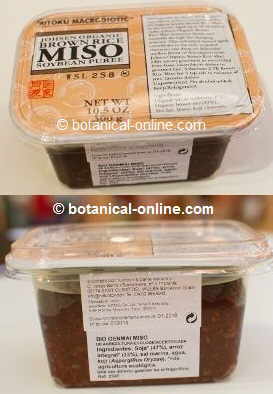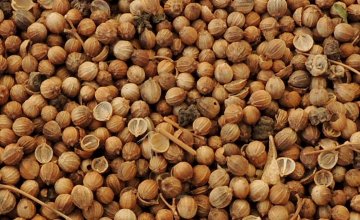Contents
What is miso?
Miso characteristics
Miso is a paste that is obtained after fermentation of soybeans.
In its preparation, salt is usually added to further enhance its flavor, since it is used as an enhancer seasoning, although it is also consumed mostly as a basic ingredient in some soups from the east.
In addition to being an important protein food, we can find it made only with soybeans, chickpeas or other less frequent legumes in its usual production or with some type of cereal, which further enhance its high biological value.
The cereals that are most commonly used for their elaboration are barley, wheat, white or brown rice.
There are different types of miso depending on whether it is made exclusively with soy or other legumes or if cereals are added.
Miso history

Its origin lies in the areas of Asia, such as Japan and China, where it was consumed hundreds of years, until today, which has reached areas around the world.
Formerly it was consumed in very different ways, such as breakfast, even as a remedy against cold weather, of those who lived in the mountains.
Even, ginger was sometimes added to enhance this heat effect especially in very cold areas of the East. It was attributed effects that lengthened the longevity of people who consumed it, possibly because of the probiotic effect that it is currently attributed to.
Currently, its consumption has been partially eclipsed by soy sauce, with which it coincides in origin of raw material, but they are very different products with different properties, although both have a high salt content and therefore, a strong flavor and used as a flavor enhancer seasoning.
What does miso provide?
Its average nutritional content turns out to be:
- A great contribution of proteins
- High carbohydrate values
- Lower levels of mono and polyunsaturated fat, with beneficial effects for our body
- A good concentration of micronutrients.
Beneficial effects of miso
Being a food made through a lactic fermentation, miso contains enzymes that exert an effect of increased digestibility, that is, that is, it achieves that the food with which the miso is made, such as soybeans or legumes or cereals, are easier to digest
How is miso made?
Its preparation consists, as in other processes of lactic fermentation, a period of time for this reaction to be carried out. On an industrial level, it is usually obtained after a minimum of 3 days with added heat to increase the fermentation speed.
How is miso preserved?
For proper preservation it is recommended that, once the container has been opened, to keep it at refrigeration temperatures. In this way, we will avoid the possible proliferation of bacteria or other pathogenic microorganisms that can spoil this food or deteriorate its nutritional properties, which would be detrimental to our health when ingested.
Where to buy miso?
Currently, miso is being marketed in natural food stores or in the department of natural food in department stores. It is usually offered in a dehydrated form that does not require refrigeration, being only necessary to keep it in a dry and cool place.
This physical characteristic will promote its conservation, since it is a barrier against external microorganisms that can contaminate this food, since it does not contain practically water.
Can all people eat miso?
Miso is suitable for all people, except people with gluten allergy or celiac disease and people with hypertension.
In the case of the use of miso for babies, special precautions should be taken, since until they have a certain age this food is not suitable. In addition, once they are prepared to digest it well, it must be introduced properly.
![]() More information on miso and soy products
More information on miso and soy products








